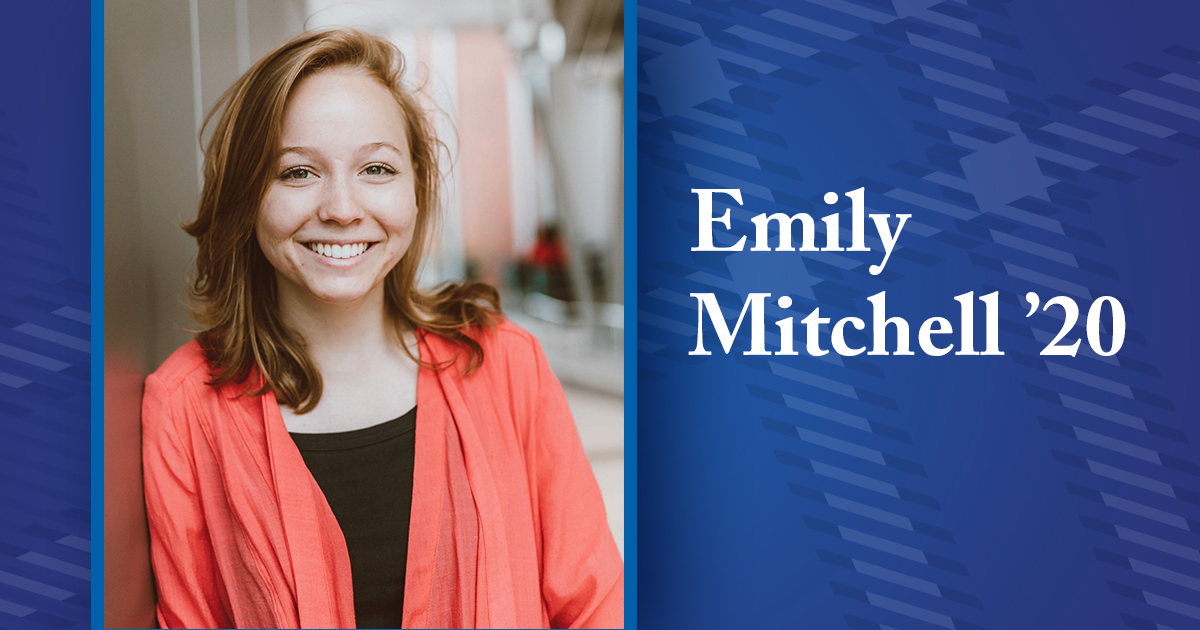Being student and teacher during the pandemic

Emily Mitchell ’20 initially came to PC as a math major but wanted to see if she would enjoy physics. She knew it involved plenty of math, and she remembered liking her physics class in high school.
One intro class in at PC, and she loved it. She added it to the list of majors and stuck with it. While a student, Mitchell also became interested in teaching physics and tutored physics and math for a few years.
Even while assisting others, Mitchell enjoyed being a student.
“As a teacher, you get to learn continually — whether it be the actual subject matter or how you will present the subject matter”, she said. “There is a lot of motivation to keep studying and learning because it helps you teach better and helps your students have confidence in you as their teacher.”
Balancing Teaching and Learning
Around her junior year, she reached out to area schools for more teaching experience. Laurens Academy, where PC students have interned before, offered her a position as part of a two-semester teaching internship.
She was teaching a 9th grade physical science (Intro Physics and Chemistry) course when the coronavirus pandemic hit.
Once she heard the news of PC’s plans to extend Spring Break this past semester, then move to online classes, she started preparing to take her classes — and have the class at Laurens Academy — online.
“It seemed PC and LA moved online around the same time, so it was a very interesting situation to be in,” she recalls.
Mitchell created a schedule with time slots for each of her classes. She used the mornings for Laurens Academy work and then moved on to her college coursework in the late morning and afternoon.
Getting the Work Done
As a student, she completed the work assigned by her professors, similar to the regular semester. She had two research-based Capstone classes that she was able to complete off campus without much difficulty. She also completed a math and coding class and self-directed study on physics pedagogy with Dr. Chad Rodekohr.
Her electronics course was a bit more challenging, but she said her professor, Dr. Eli Owens, did a good job with transitioning to the new format.
“He had us order Arduino kits (a form of an embedded system that we could use to continue our electronic work) and created video lessons for us to watch and follow along with,” she said. “He kept the assignments very interesting and fun, which made the transition easier for us, too. He also hosted study sessions and Q&A time on Google Meet to discuss any difficulties or questions we had on assignments.”
Learning to Teach Online
As a teacher, she had to figure out how to teach online effectively, she said.
“My classroom is usually very dynamic, and I like to get the students involved quite a bit, and that is very difficult to do online. Usually, I have questions throughout each lesson and activities that the students work on to keep them engaged, but there was little opportunity to incorporate things like that well into the online world.”
Mitchell started with typed-out lessons, worksheets and projects. It worked OK, but she found it wasn’t the best long-term solution.
“Reading material can be a good start for understanding, but it is difficult to get a deep level of comprehension without explanation,” she said. “After doing the typed lessons for a week or two, I switched to making video lessons.
“Overall, the students did good work, and I was impressed with some of the experiments they did. Some assignments were open-ended and let them be creative with how and what they did to reach the end goal, and they did a great job with all that.”
Mitchell hosted study sessions and tried to keep things flexible with open communication concerning due dates and workload. Meanwhile, she completed her final semester of college. She earned both the Outstanding Senior Award in math and physics.
The Next Step
Looking back, she says she’s learned quite a bit about online teaching and learning.
“I enjoyed how Dr. Owens conducted his class, and I implemented some of his methods into my class (ex. videos and study sessions),” she said. “Most of all, being flexible is very important. With the students so far away, it can be difficult to keep them engaged and interested in the material.”
This fall, Mitchell will take her skills into her classroom, as she has accepted a teaching job at Blue Ridge School in Virginia. She will teach physics and math at the all-boys boarding school located north of Charlottesville.
